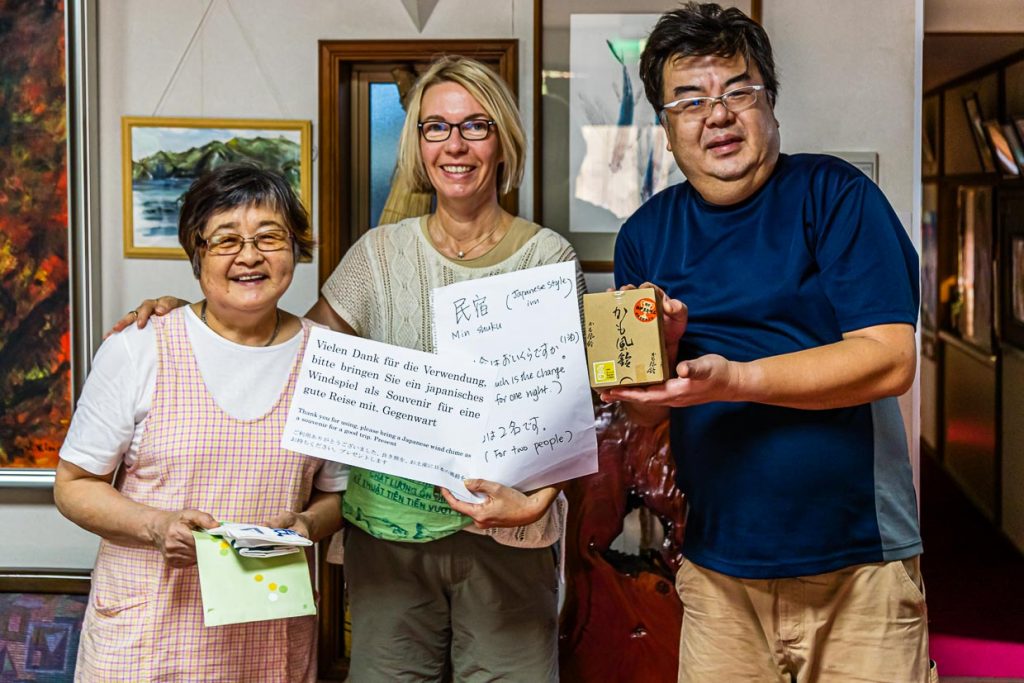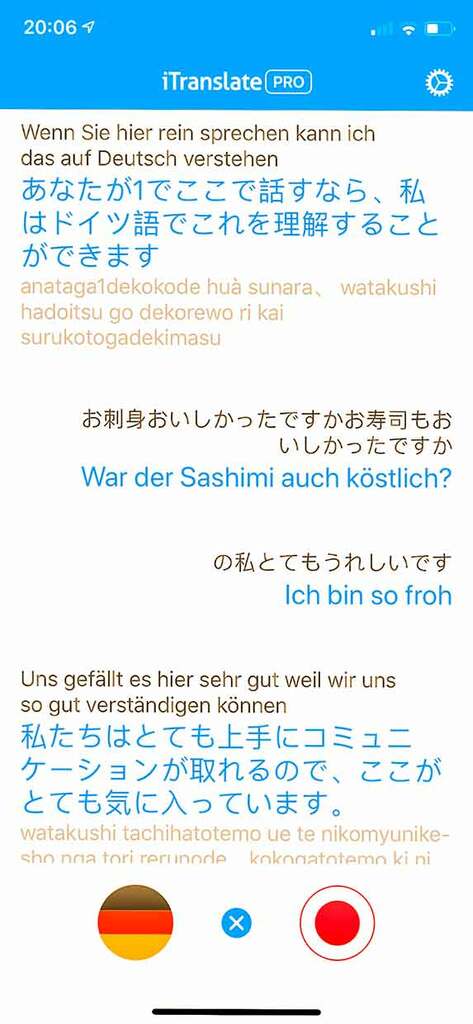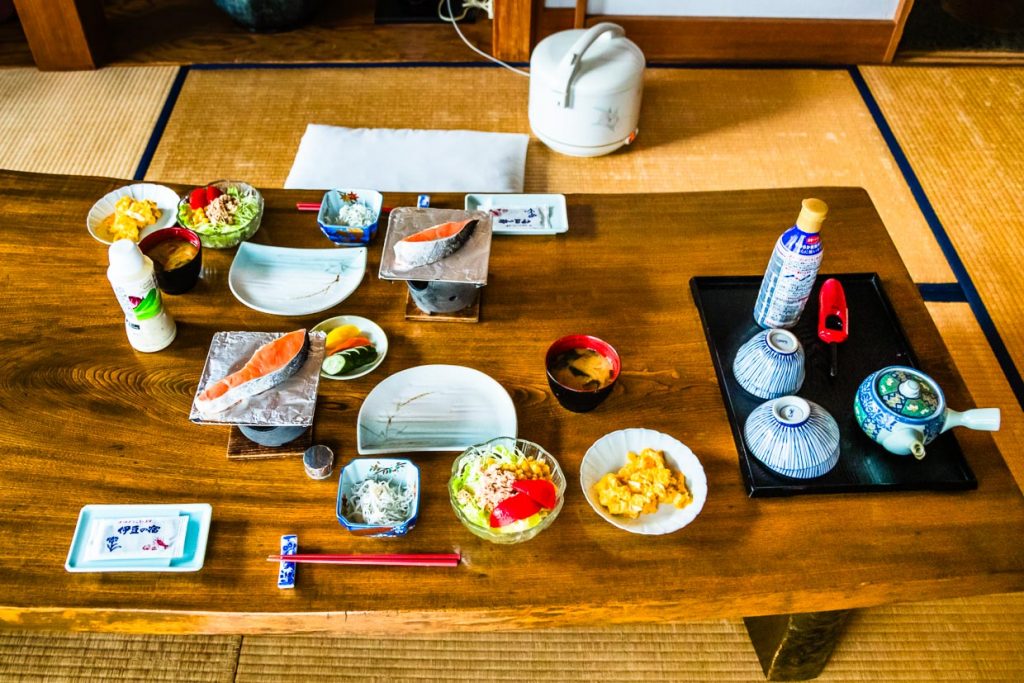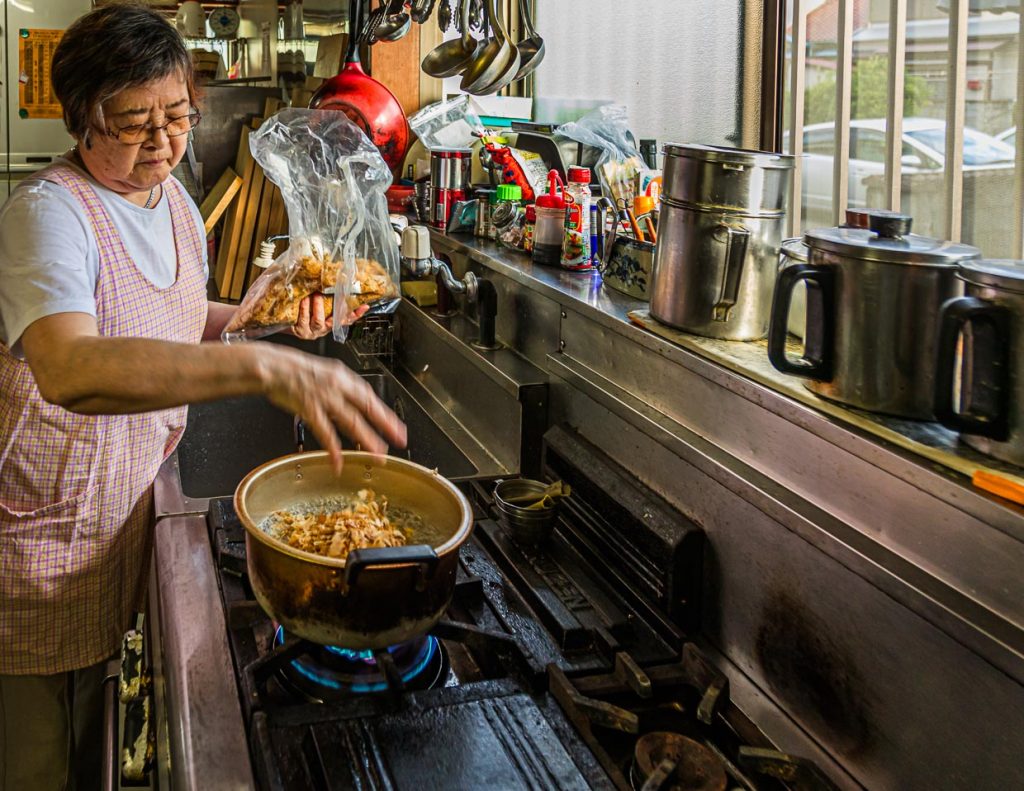Japan has been open to tourists again since October 11, 2022. When we visited Shizuoka Prefecture in September 2019, we would not have thought it possible that we would be among the last foreigners traveling individually through the country for a long time and that our travel experiences would make it into the Shizuoka Shimbun, the evening newspaper of Shizuoka.
In this photo, you can see Ms. Iyama and I already very routinely and visibly amused using a translation app to break down our language barrier. Three days before, we had parked our rented car in front of the hotel in search of a restaurant and a place to stay for the following day. Ryokan Izu Makiba parked. The fabric flags in front of the entrance were the only indicator for us that it could be a restaurant. A traveler leaving with suitcases gave us hope that it might be a traditional guesthouse, a ryokan, where we could find a room and meals. At this point, we felt quite Lost in Translation. We could not read signs, nor could we get anywhere with English. Fortunately, our dear travel acquaintance Noriko had prepared us for this situation. At the entrance of Ryokan Izu Makiba we held up a large sheet of paper. There, in most beautiful Japanese characters, was written. “How much is one night for two people”.

Comforting rice balls and a promise
Our Japanese written counterpart brought us into a gesture-filled conversation with Hiroto and his mother. The first signals, however, were not very positive. Because dinner time was over and they couldn’t offer us a room either. The fact that we needed a place to stay for the next day anyway was much too complicated to communicate. So, with no prospect of a delicious Japanese menu, we must have looked quite down on them. We said our contrite goodbyes and returned to our car. No sooner were we seated than Ms. Iyama arrived with two bottles of cold green tea. What happened next is one of our fondest travel memories.
Change of perspective
At this point, the story is retold from Hiroto Iyama’s point of view. It is not quite as dramatic as in the film Rashomon, in which Japanese director Akira Kurosawa has an event told from four different perspectives. Thanks to Momoko Takii of Tourism Shizuoka, we are still in contact with Hiroto today. It is also thanks to Momoko that our travel experiences made it into a Japanese newspaper on the occasion of the lifting of the entry restriction in October 2022.
Based on my journal, I would like to put the story this way.
In the middle of long weekend, we have all rooms booked. There was new guests at the door saying “We are quite hungry and looking for some place to eat. Could we have lunch here?” There were English, German and lots of gestures. They had a sketchbook with expressions in Japanese and Germans. I answered with my poor English that we are not a restaurant but it seemed like they did not understand me. I used a translation app and told them that all restaurants around here are having a break between the lunch and dinner time.
They were about to return to their car…when this thought came to my mind.
“I do not want to let them wander hungry and uneasy!” So I asked Okami to keep them while I make rice balls. 10 minutes later I came back with rice balls (bonito flake, salmon, and Wakame seaweed), stewed ginger and English tourism brochure.
Half an hour later, they came back but I could not leave the kitchen to prepare dinner. There is only Okami who was able to talk to them. Then there comes our savior – another guest who can speak both English and German. They were already chatting at the entrance.
The couple says they enjoyed our Onigiri and would like to stay here.
We were fully booked so told them they could come back the next day.
They ended up staying with us for three nights and explored further in the area.
While they were here, we had a great time taking about local topics and Japanese food.
Hiroto Iyama, Izu Makiba


Mrs. Iyama and the best miso soup
Already after the first breakfast in the Ryokan Izu Makiba it was clear to me: Here they serve by far the best miso soup I had eaten in Japan until then. Since Ms. Iyama and I were meanwhile having great fun serving the translation app, I immediately asked her if she could show me how to make her soup the next morning. Miso-Shiru – from the happiness of a warm soup.

If it had been up to the translation app, Ms. Iyama in the picture above would not have thrown katsuobushi into the cooking pot, but cats.
This story has triggered a long discussion in Japan on Facebook, which probably comes across as difficult to understand due to the automatic translation. However, we have an inkling through our encounter how it is meant.

